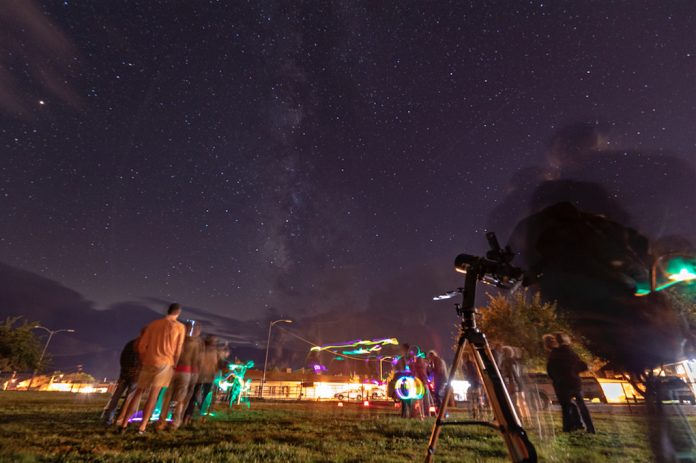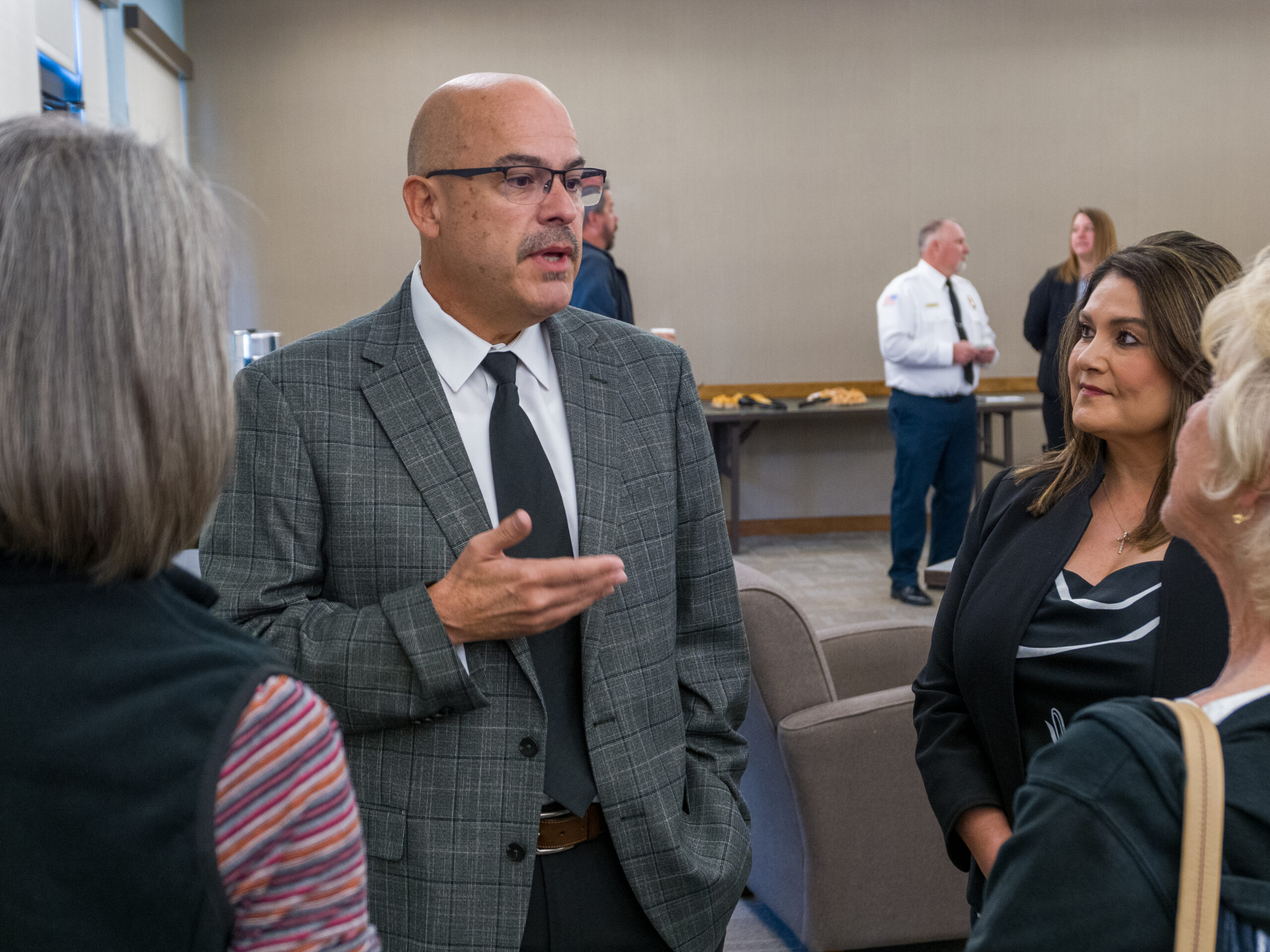In June, Camp Verde successfully completed its years-long bid to become recognized by the International Dark-Sky Association as the 20th International Dark Sky Community, culminating an effort that had started back in 2000. To celebrate, the town hosted its first ever Dark Skies Festival on Saturday, October 6.
“By making it a festival, we want to draw people to the community who might not understand what dark skies are all about,” said Sebra Choe, economic development specialist for the town of Camp Verde who organized the event. “We want to make it a really fun event that’s educational and inspires people to stop light pollution. By introducing them to astronomers and getting them to look through telescopes, we want them to be really inspired by the dark skies we have in Camp Verde.”
The event was geared towards helping residents of Camp Verde and the whole Verde Valley to appreciate stars in the night sky by educating them in what they were seeing.
The gym at the Camp Verde Community Center was decked out in exhibits about the universe, including scale models of the solar system that ranged from a marble representing Mercury to a basket- ball for Jupiter. Special scales let people compare their weight on Earth with what their weight would be on other planets.
“We’re always going ‘What’s that?’ at the constellation, and now hopefully we’ll know more,” said Camp Verde resident Brandi Rowse. Rowse said that while she has long enjoyed stargazing, an event like this had greatly increased her interest in the night’s sky.
Camp Verde provided resources for those, like Rowse, who came away from the festival eager to see even more of the night’s sky in their back yard. John Graham, a member of the Flagstaff Dark Skies Coalition, who, in 1998, rst set that city on its path towards becoming the very first International Dark Sky Community, gave a talk for homeowners on how to set up their houses to minimize light pollution.
According to Graham, prioritizing dark skies does not mean ending outdoor lighting at night, but focusing on special light fixtures and bulbs to ensure “the right amount of light, in the right place, at the right time, at the right color temperature.” Graham advised homeowners to purchase fully-shielded light fixtures that point downwards, filling fixtures with warm- colored bulbs, and installing motion detectors to ensure that they shine only when needed, all of which he argued could be done cheaply without sacrificing visibility at night.
In the center of the gym sat an inflated mobile planetarium provided by the Arizona Science Center. Festival-goers could step inside, sit back and watch a video tour of each of the solar system’s planets, following the path of the New Horizons spacecraft that launched in 2006. The visuals were stunning, even if the dull roar of people throughout the gym made it near impossible for those inside the planetarium to hear the narration.
For a more thorough understanding of New Horizons’ journey through the solar system, attendees were treated to a talk from the event’s keynote speaker, Dr. Jeffrey Hall, Director of the Lowell Observatory. Hall explained the history of Pluto, from its discovery in 1930 at the Lowell Observatory, to the recent high quality photographs taken by the New Horizons probe. He explained why Pluto had lost its planet status in 2006, and made a strong case for why he thinks it should be considered one after all.
Beyond just Pluto, Hall engaged the audience by advocating for astronomy as one of the world’s true wonders.
“Astronomy is about answering our very oldest questions,” Hall said. “Our ancestors looked up at the skies and said. ‘Where did we come from?’ and ‘Are we alone?’ The atoms in our bodies are made in stars.”
Ken Zoll, director of the Verde Valley Archaeological Society, sees the increased efforts to limit light pollution in the Verde Valley as tied into the culture of the Sinagua peoples who lived in the area long before Europeans came. Zoll said that study of Sinagua calendars show they were “among the most sophisticated and advanced of ancient cultures in mapping the stars.”
“The dark sky is recreating the sky of the ancients,” Zoll said. “It’s like going back in time.”
Once night fell, attendees moved outside to the eld outside the community center, where volunteers from the Astronomers of Verde Valley set up telescopes to view faraway objects. Saturn’s rings were clearly visible through a viewfinder, as was a cluster of stars 9,600 light years away. By gazing into the telescopes, festival-goers could see light from millennia in the past; The sky works as a time machine in more ways than one.
“The designation of a Dark Skies Community identifies Camp Verde in a very special way and is very compatible with our agrarian history,” Mayor Charlie German wrote in an email. “We were founded with homemade candles, fire- place light, kerosene lanterns, all by which children were read to and by which they did their homework. We are choosing to preserve those priceless memories so many of us have and that have been lost though the advancement of technology and the flooding of our entire society by the very light which that technology brings to us through our building of cities and towns.”
Jon Hecht can be reached at 634-8551, or email jhecht@larsonnewspapers.com



